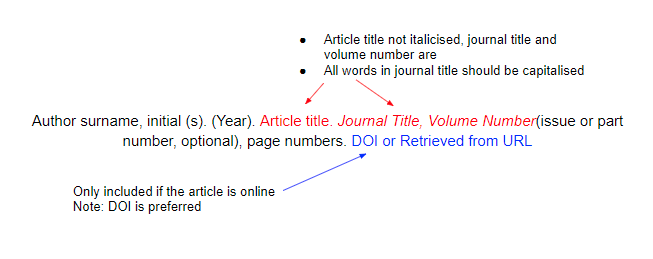What are APA style reference list rules for articles in periodicals? The references below use the APA Publication Manual 7 (released on October 2019). Learn how to properly cite a source or reference in APA style format in this full APA format citation guide. Read the other guides to learn how to cite other source types according to research papers, professional papers, scholarly journal’s, and student essays.
Understanding an APA reference list for articles in periodicals: what is APA style?
APA is a writing format for academic documents. These documents typically include scholarly journals, books, student essays, and other educational material. For example, in the field of behavioral and social sciences (including sociology, education, health science, criminal justice, and psychology) APA style is used as a standard format for research.
APA stands for the American Psychological Association. The APA became involved in journal publishing in 1923. And in 1929, an APA committee had created a seven-page writer’s guide published in the Psychological Bulletin. Editions of the APA manual have since evolved. With major releases in 1974, 1983, 1994, 2001, 2009, and 2019. Each with their edition titles.
For example, the 2019 edition is referred to as “APA 6” style. Revisions of the APA style guide tend to follow developments of the English language and linguistics as a whole.
APA Style 7th Edition font suggestions
APA Publication Manual 7 requires that chosen fonts be accessible to readers and consistent throughout essays and research papers. The APA Manual does not specify a certain typeface or font for papers. They do recommend the following typefaces with their point sizes as follows:
| Font | Point size |
| Calibri | 11-point |
| Arial | 11-point |
| Lucida Sans Unicode | 10-point |
| Times New Roman | 12-point |
| Georgia | 11-point |
| Computer Modern | 10-point |
What are the APA reference list rules for articles in periodicals?
APA style mentions that authors should get named by their last names followed by their initials. Then the publication year (between parentheses), followed by a period. The title of the article should be in sentence-case, making the first word and proper nouns in the title capitalized.

The general format is as follows:
Author, A. A., Author, B. B., & Author, C. C. (Year). Title of article. Title of Periodical, volume number(issue number), pages. https://doi.org/xx.xxx/yyyy
Here are the rules that govern the articles in periodicals APA style.
| Rule | Example |
| Article in a print journal | Smith, R. (1998). The eclipse of humans. The New Journal, 15(3), 5–13. |
| Article in an electronic journal | Smith, S., & Johnson, S. (2012). Data and UX Design: Human Centered Learning. Duke University, 6(1), 11–16. https://doi.org/10.5703/1288284316979 |
| Using URL instead of a DOI | Smith, H., Johnson, J., & Bryan, L. (2018). “What computers tell us about the future”: Understanding humans and the machines. The Journal Center, 37(1), 67–98. https://www.jstor.org/stable/26537363 |
| Articles in a magazine | Smith, J. (1992, April). Small is better than large. Time, 135(17), 20–21. |
| Article in a newspaper | Smith, S. (2012, December 28). Making policy change. USA Country Today, 1A, 2A. |

APA 7th Edition Formatting and Style Guides:
Here are more resources on APA style:
- General APA Citation Format
- In-text Citations
- In-text Citations: Author/Authors
- Reference List: Basic Rules
- Reference List: Author/Authors
- Reference List: Articles in Periodicals
- Reference List: Books
- Reference List: Other Print Sources
- Reference List: Electronic Sources
- Reference List: Audiovisual Material
- Reference List: Non-Print Resources
- APA Legal References
- Footnotes and Appendices
- Numbers and Statistics
Inside this article
Fact checked:
Content is rigorously reviewed by a team of qualified and experienced fact checkers. Fact checkers review articles for factual accuracy, relevance, and timeliness. Learn more.
Core lessons
Glossary
- Abstract Noun
- Accusative Case
- Anecdote
- Antonym
- Active Sentence
- Adverb
- Adjective
- Allegory
- Alliteration
- Adjective Clause
- Adjective Phrase
- Ampersand
- Anastrophe
- Adverbial Clause
- Appositive Phrase
- Clause
- Compound Adjective
- Complex Sentence
- Compound Words
- Compound Predicate
- Common Noun
- Comparative Adjective
- Comparative and Superlative
- Compound Noun
- Compound Subject
- Compound Sentence
- Copular Verb
- Collective Noun
- Colloquialism
- Conciseness
- Consonance
- Conditional
- Concrete Noun
- Conjunction
- Conjugation
- Conditional Sentence
- Comma Splice
- Correlative Conjunction
- Coordinating Conjunction
- Coordinate Adjective
- Cumulative Adjective
- Dative Case
- Determiner
- Declarative Sentence
- Declarative Statement
- Direct Object Pronoun
- Direct Object
- Diction
- Diphthong
- Dangling Modifier
- Demonstrative Pronoun
- Demonstrative Adjective
- Direct Characterization
- Definite Article
- Doublespeak
- False Dilemma Fallacy
- Future Perfect Progressive
- Future Simple
- Future Perfect Continuous
- Future Perfect
- First Conditional
- Irregular Adjective
- Irregular Verb
- Imperative Sentence
- Indefinite Article
- Intransitive Verb
- Introductory Phrase
- Indefinite Pronoun
- Indirect Characterization
- Interrogative Sentence
- Intensive Pronoun
- Inanimate Object
- Indefinite Tense
- Infinitive Phrase
- Interjection
- Intensifier
- Infinitive
- Indicative Mood
- Participle
- Parallelism
- Prepositional Phrase
- Past Simple Tense
- Past Continuous Tense
- Past Perfect Tense
- Past Progressive Tense
- Present Simple Tense
- Present Perfect Tense
- Personal Pronoun
- Personification
- Persuasive Writing
- Parallel Structure
- Phrasal Verb
- Predicate Adjective
- Predicate Nominative
- Phonetic Language
- Plural Noun
- Punctuation
- Punctuation Marks
- Preposition
- Preposition of Place
- Parts of Speech
- Possessive Adjective
- Possessive Determiner
- Possessive Case
- Possessive Noun
- Proper Adjective
- Proper Noun
- Present Participle
- Prefix
- Predicate



